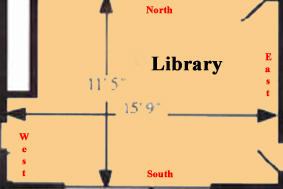
The Library began life as just another bedroom. I added the shelves in the 1970s. The room is not real mahogany -- if you look at our Faux Graining Page you can see how the job was done.

We'll start at the North Wall (top of the diagram above) and work around the room counterclockwise (West, South, East...)
The North Wall
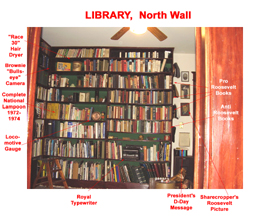
Click to Enlarge
The North wall is almost entirely bookshelves. I have arranged my collection of materials on the New Deal, with all the "Pro-Roosevelt" books in one place and the "Anti-Roosevelt" books on another. There are books by almost everyone who ever met Franklin Roosevelt, including cabinet members, generals, admirals, ambassadors, ralatives, congressmen, political bosses,secretaries, and even his bodyguard. After reading this mass of material, I still have no idea who Franklin Roosevelt really was. He seems to be all things to all people. If you disliked him, he was the quintessence of evil. If you liked him, he was a saint. I still can't decide whether the New Deal worked or it didn't. On sober reflection, it cost about a trillion 1944 dollars to fix the damage that bankers and speculators did to the economy in the 1920s. The problem is that the trillion was spent on World War II. From the perspective of the Serious Recession (Ha!) of 2009, I just hope that we don't have to fight World War III to fix the damage done to our economy by the bankers and speculators.
For some folks, Roosevelt was more than a man. One of my dearest possessions is a picture of FDR in a cheap tin frame. We were driving through the south and saw an abandoned sharecropper's house. We stopped and peeked inside. Amidst the shambles, this Roosevelt image was hanging on the wall. To some, FDR was the only hope they had. In my own family, I can recall that almost all my relatives got some form of "relief" during the Depression. After WWII, when things picked up, I watched each one of them move to the suburbs and start complaining about "Big Government".
On a somewhat lighter note, I also have a complete set of the National Lampoon from 1972-1974 (when it was funny and not just dirty...)
The West Wall
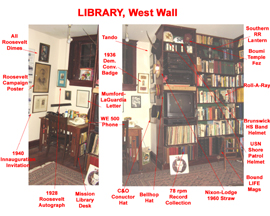
Click to Enlarge
The West wall of the library is devoted to books on World War II, something that is essential, I believe, to the evolution of American society in the 1950s and beyond. The geopolitical decisions that were made, particularly in the Middle East, affect us directly today. The sacrifices, frustrations and aspirations of the men and women who fought the war shaped our thinking (positively and negatively) until the turn of the century. It is only now that a new generation free of the conflict between the WWII Generation and the Baby Boomers can begin to evolve a new society.
The West Wall also contains our bound issues of LIFE magazine from which many of our observations about the 1940s spring. A curious item called a Roll-a-Ray sits on one shelf. It is a sunlamp on wheels. Although it looks innocuous, during the 1940s and 1950s it was widely touted to the unsuspecting as a cancer cure.
We have a large collection of funny hats to go with all our dance costumes. Do you need a Train Conductor for your next party -- we picked up a complete C&O conductor's uniform. The "Nixon'Lodge" straw hat is from the 1960 presidential campaign.
We have a collection of materials related to FDR, including several autographs, acalling card from the Governor's mansion in Albany, a framed collection of all the siver Roosevelt dimes, an invitation to the Innaugural Ball in 1941, and a convention delegate's badge from 1936. Our treasured autograph is a letter from Fiorello LaGuardia to Lewis Mumford requesting that he write a History of New York City.
The South Wall

Click to Enlarge
The South Wall is largely a doorway to the Office. The presence of the windows is a result of the choice of the owners to "accessorize" the house by adding two "Sleeping Porches" (#102 in the Catalogue): the East version had a three window room on the second story with a pantry/porch on the first; the West version had two three window basy on the first and second floors. Thus, the windows in the library are to provide light and ventillation into what would have been an interior room.
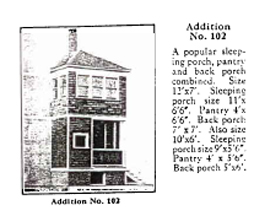

Click to Enlarge
Apart from the Roosevelt memorabilia discussed above, the South wall holds a pair of snowshoes that were used by the U.S. Army mountain divisions during World War II.

Click to Enlarge
A model of the famous Central of New Jersey Blue Comet train is displayed above the door on the South wall.
The East Wall
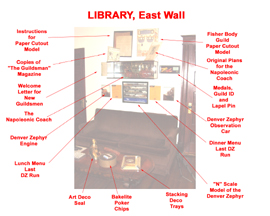
Click to Enlarge
The East wall is dominated by our display of a Napoleonic Coach that was constructed for a national competition. A 14 year-old built this from scratch, devoting almost 2,400 hours to the task which included working with wood, leather, cloth and glass as well as casting metal. We have a rather detailed page on the Fisher Body Guild, sponsor of the contest.
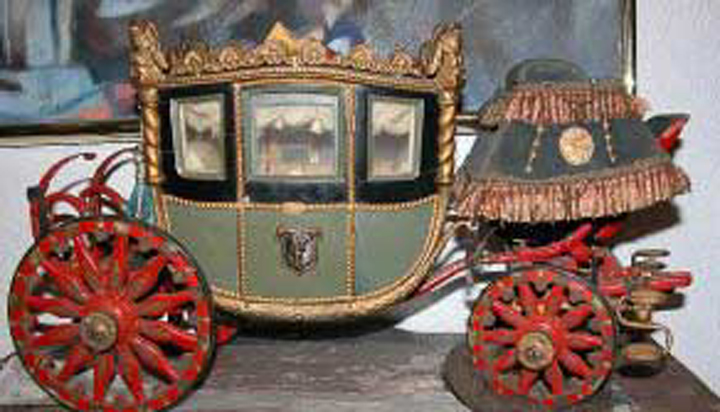
The Fisher Body Guild
One Twelfth Scale Napoleonic Coach
Basically, Fisher Body, the styling division of General Motors used the contest to find new talent. The prize was a complete 4 year scholarship and a guaranteed job at Fisher. At the bottom of the Depression, this must have been a very powerful incentive. Thousands of boys submitted models. The guild was an amazing organization -- you should look at the web page we have prepared about it. This was good publicity for GM and boys loved it. The contest was so successful that in later years, GM came out with a paper cutout version for boys as young as 8. If you didn't win the contest, you got a swell magazine called "The Guildsman" that kept you up to date with all the new developments at GM.
Below the Napoleonic Coach is our "N" scale model of the California Zephyr, commemorating our ride on the portion of it that survived the change to Amtrak.

Our "N" Scale Model of the Californi Zephyr
Click to Enlarge
The Rio Grande railroad initially opted out of Amtrak and continued to operate its section of the former California Zephyr as the Rio Grande Zephyr. I was privileged to ride this train in the Spring of 1981. The ride was spectacular and the food was nothing short of fantastic. Here are the menus from that particular run:
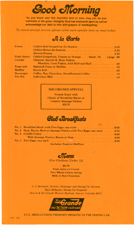
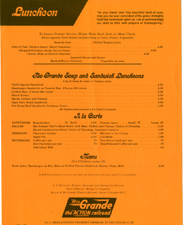
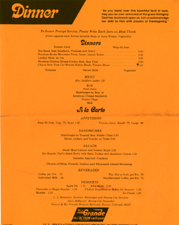
1981 Breakfast, Lunch and Dinner Menus for the Rio Grande Zephyr
Click to Enlarge
I have scanned the photos that I took in 1981 and made up a Special Slide Show to show the cars, staff, stations, and scenery from that trip. You can check out the full history of the California Zephyr on our Streamlined Locomotives Page.
This completes the Library. Where would you like to go next?
The First Floor
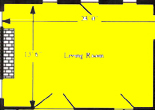

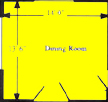



The Second Floor






The Basement
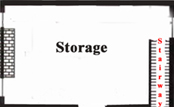


If you don't like clicking on pictures:
You are in the Library:
- Go to the Living Room
- Go to the Hallway
- Go to the Dining Room
- Go to the Kitchen
- Go to the Florida Room
- Go to the Breakfast Room
- Go to the Master Bedroom
- Go to the Guest Bedroom
- Go to the Upstairs Hallway
- Go to the Office
- Go to the Basement Storage Area
- Go to the Dance Studio
- Go to the Workshop
- Look at the Exterior and History of the House
OK -- Go someplace else
Counter for THIS Page
Home | About Lindy | Last Week's Reviews | Upcoming Events | 1940s Collecibles
The Guide - Establishments - Travel - Accessories
Music | Links | Photo Gallery | Extras | Contact